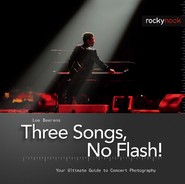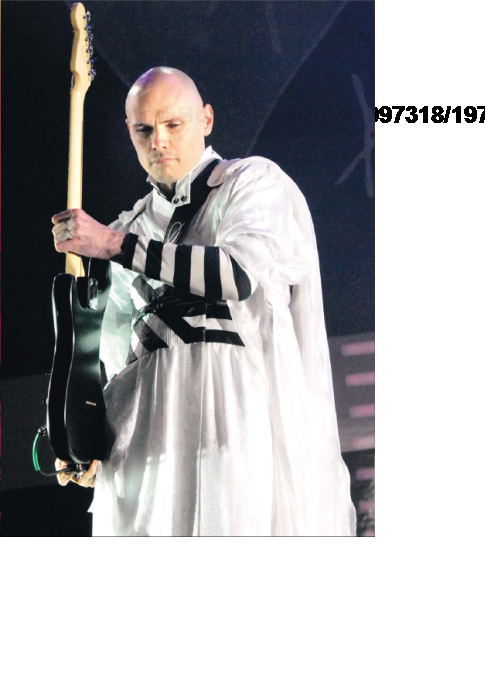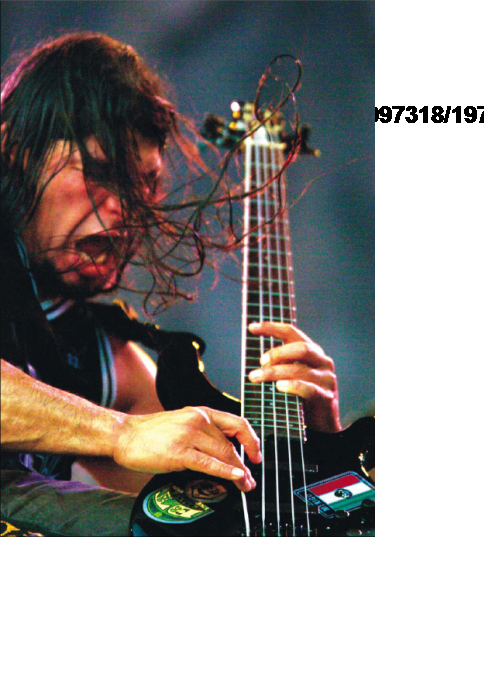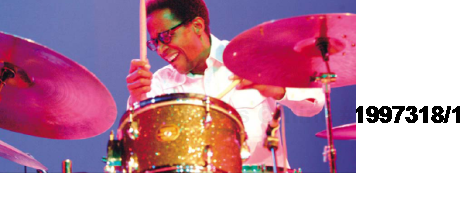Again, it is important to listen to the performer you are shooting. Most of the time, the rhythm guitarist plays certain patterns repeatedly. Lead guitarists play the same or a slightly different pattern, but also riffs and solos. During the solos, especially when they play the high notes, you will get the best facial expressions. Take your shot when they reach the highest note. At that moment, their hands are usually at the bottom of the guitar neck—an excellent opportunity to combine your standpoint and frame with the ultimate expression. Result: a 100 percent perfect picture.
Rhythm guitarists require a different approach. You won't get much facial expression, as their musical role is more of an accompaniment. On the other hand, they are the ones who run across stage, wave their arms, make the show, and come up with very photogenic poses. In this case, medium or total shots work best. Study the way the guitarist stands and moves, look for what distinguishes him from other guitarists, and capture that in your shot.
The complete guitar should be in the photo. I hate it when the neck is cut off. If need be, I hold the camera in an almost diagonal position, as in this photo of Slash. I twist and turn the camera until the guitar fits into the picture.
It's even better when the guitarist poses in a special way, like Justin Hawkins of The Darkness did in this photo. In the end, it was just a matter of finding the right light and spotlight.
For this concert, Smashing Pumpkins dressed up like true disciples of rock 'n' roll. Billy Corgan, founder of the band, turned his guitar towards the amplifier for a better sustain (a very long high note). As you can see by the shutter speed and aperture, there was a lot of light on stage.
Larry Carlton lets his fingers slide down all the way down to the bottom of the guitar neck. This means high tones and probably the climax of a solo. As you can see, I included the complete guitar neck in the picture when I could have gone for a slightly narrower frame.
One of the best guitarists, and therefore a legend, is Jeff Beck. Though he plays jazz, you can always tell that he has a rock music background. That's why I included the amplifier in this picture, as it belongs to the sound of Beck.
Head banging works well in a photo, especially when it's done by somebody with long hair. You need lots of light and a high shutter speed to capture this movement. In this photo, Joe Sumner (yes indeed, Sting's son) goes crazy during his solo. Sumner's band is called Fiction Plane, by the way.
Robert Trujillo of Metallica came so close to the edge of the stage that he was almost too close for a telephoto shot. I could have gone for a short lens but decided against it. The short depth of field forced me to make a choice. I chose the hands, and I am still behind that decision.
I could hear that Stanley Clarke was working his way to the end of a long solo, but he hadn't reached the high point yet. Then he started punching his bass guitar with his fist. In this photo, you can almost hear the energy coming out of the speakers. Always listen to the music so you know when these moments will occur.
It may seem as if I were at front stage, shooting up with a wide-angle lens, when B. B. King bent forward in my direction while playing a solo. In reality, I was standing 20 meters away with a 200 mm lens. The illusion of a wide-angle lens is caused by the wide shot. King is playing his guitar sitting on a chair. Instead of bending forward, he pulls his guitar up so it only looks like he's bending forward. The result is an energetic photo that serves the 82-year-old legend right. As always, the focus is on the eyes.
Drummers are often hard to photograph, especially when you're standing in front of a high stage. If it seems impossible, don't even try–don't waste your time. But if circumstances are good, go for it as it can be very worth your while. Pick a standpoint where you can see the drumsticks move. This is a must. A drummer without sticks is like a guitarist with no strings on his guitar.
A big advantage is that you can take your time to make a nice composition, as the drummer stays in the same spot. A frontal shot is possible; if you want to go for a really close shot, be sure to include part of the toms and cymbals. Contrary to photographing guitarists, with drummers you don't have to include the whole instrument in your shot. If you want to make a wider shot, include the cymbals and half of the bass drum. That way you will still see some facial expression, which you will lose if you decide to go for the complete drum kit. Set the shutter speed at minimum of 1/250; otherwise, you won't see the fast-moving drumsticks.














